Rich in history and charm, a delight for the eyes and taste, Sorrento will surprise you with its sights, flavor, and its vitality.
Deep Valley of Mills
Nature and breathtaking views will be the main characters of your stay in Sorrento. A place that cannot be missed is, of course, the Vallone Dei Mulini, a crack that arose more than 35 thousand years ago. Its origin is associated with a strong eruption and subsequent processes that, under the influence of water, engraved the tuff base. The name refers to the mill, the remains of which were still used to grind wheat until the early 1900s. The testimonies mention the presence of a public laundry, where women went to wash, and a sawmill fed by the waters coming down from the hills. Different types of wood were processed here.
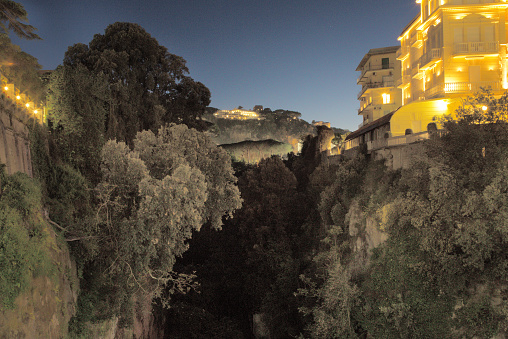
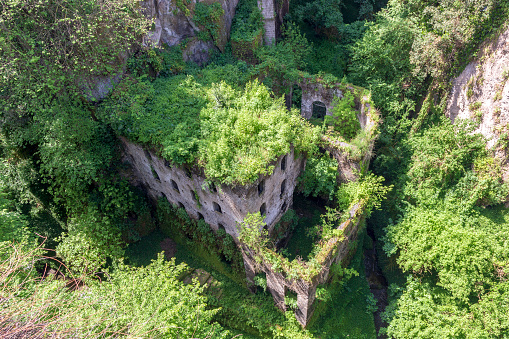
The valley was connected with Marina Piccola and the port and was an important meeting place for the population. The construction of Tasso Square put an end to activities in Walloon. And indeed, the filling of the valley with its subsequent removal from the sea contributed to an increase in humidity and made the area uninhabitable. However, the microclimate had a positive effect on the luxuriantly overgrown vegetation.
Church of San Francesco
A complex that you should not miss in any case: here, in addition to the church, you will find a monastery. The church was built on the site of an old oratory, and its baroque shades were somewhat changed. The white marble facade dates back to 1900, and the door is inlaid four centuries earlier. There is only one nave in the interior, but such simplicity is enriched with exquisite stucco decoration. There is also a wooden statue of St. Francis and a canvas on which he receives stigmata. Next to the church, there is a Benedictine monastery founded in the seventh century: now it belongs to monastic monks who occupied a small part of it since the fifteenth century.
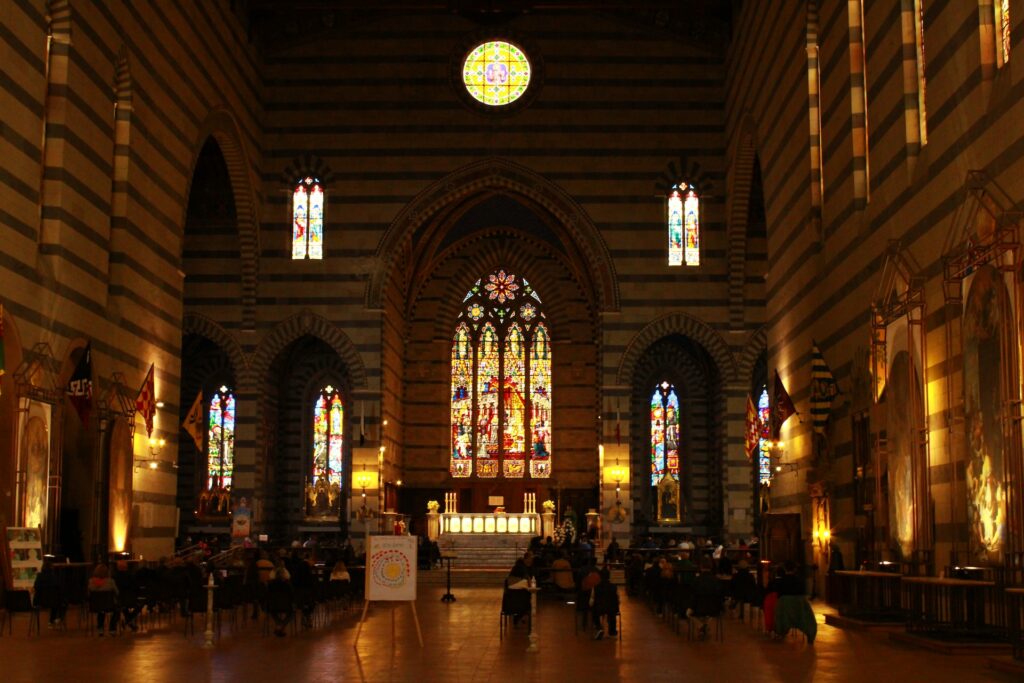
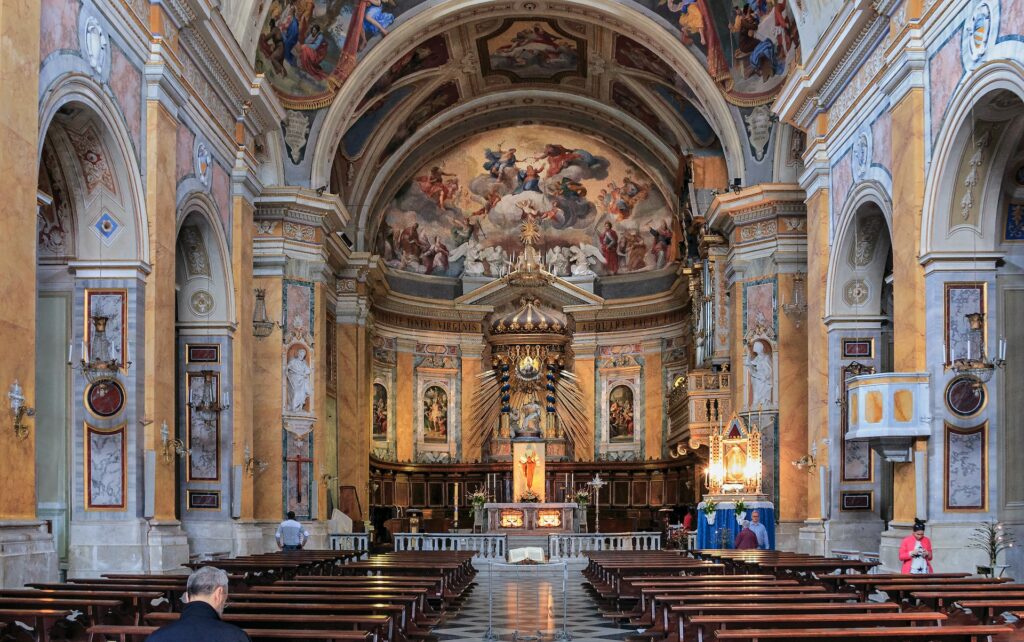
The small monastery, built in 1300, is a real gem thanks to its special arched structure, which combines different styles and recalls the various restorations it has undergone over time. The frame is also complemented by a special composition of flowers and plants. The monastery is famous not only for its beauty and history but also for the place where reviews, art exhibitions, and summer events take place.
Correale Museum
It has been identified as “the most beautiful provincial museum in Italy” due to its special collection of small works of art spanning the 1600s and 1700s. The headquarters is a building full of charm and history since in the eighteenth century it was the residence of the Correale family, the Counts of Terranova. The museum’s collection is quite extensive and is divided into 24 halls, ranging from Greek and Roman finds, but also up to the Middle Ages. Especially exquisite is the furniture of the 18th century, porcelain and majolica Capodimonte. Other prestigious manufactories are added to them, which include Bohemian crystals, Venetian glass, and watches. There is no shortage of exquisite examples of local crafts.
The paintings dominated by the Posillipo school, known for its landscape painters, are also very interesting. There are also works by Torquato Tasso. Among the 10 thousand exhibits are figurines of a traditional Neapolitan nativity scene and various wooden objects related to the processing of wooden inlay. In the end, you can also enjoy the garden that stretches around the palace and the beautiful belvedere terrace overlooking the Bay of Naples.
Tasso Square
The tourist and living heart of the city, the emblem of a place that is always on the move. The square acquired its current appearance around the nineteenth century. In previous centuries Ferdinand of Aragon built an estate and an ancient city wall, which served as protection against Saracen raids. At that time it was called Largo del Castello. Named after Torquato Tasso, to whom the monument is also dedicated, here you can admire various sights, starting with the church of Santa Maria del Carmine, built in the Baroque style and known for its yellow and white stucco facade.
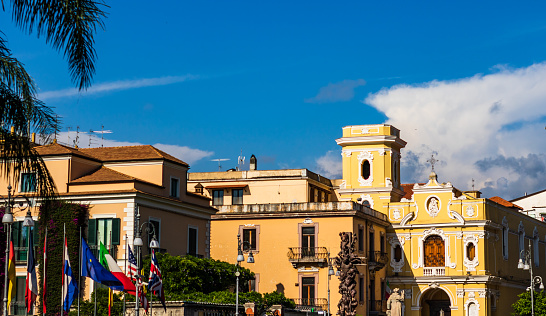
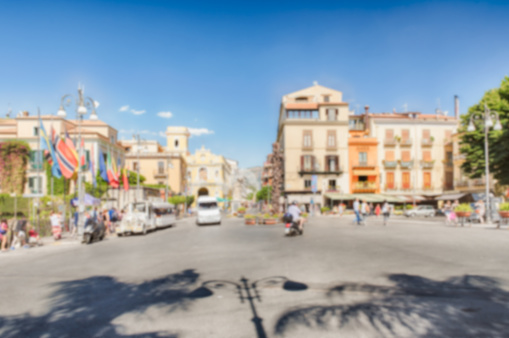
Don’t miss the Correale house, which also boasts a majolica courtyard. Among the curiosities is also the Grand Hotel Vittoria, where tenor Enrico Caruso stayed in 1921. Visitors are greeted by a statue of Sant’Antonino, the patron saint of the city. You will have access to the historical center of Sorrento and its narrow streets full of craft shops, exquisite ice cream parlors, and souvenir shops.
Sedil Dominova
This is the only remaining example of noble places, that is, medieval institutions that were engaged in the management of Res Publica. You will find yourself in front of a Renaissance work, which is a synthesis of various transformations that changed its original appearance. This is a loggia closed on both sides, decorated with spectacular frescoes. One of the main ones is the coat of arms of Sorrento surrounded by angels. The loggia is crowned with a dome on which the coats of arms of the families are depicted.
Since 1895, the Saletta, which is located next to the loggia and which was once used for meetings that were not public, has been the residence of the Workers’ Mutual Aid Society. The noble residence was built in the 13th century. To make this monument especially fascinating, there are two elements: gray tuff and special yellow and green tiles (“le riggiole”), which were made by a Neapolitan master. Regarding the monument, there is another anecdote: it is located in an area called “schizzariello” because of the proximity of the spring, where in ancient times women used to go for water with special terracotta amphorae.
Marina Grande
This is one of the most memorable villages of Sorrento, able to preserve its identity, balancing tradition and a pinch of modernity. You will find the remains of ancient walls and a history full of destruction and second lives. In ancient times, the city was the cradle of shipyards engaged in the construction of special boats called Sorrento Gozzi. The traces of this practice are still visible. To all this interest, add a beach that will conquer you, and a set of streets and frames capable of interesting directors such as Luigi Comencini and Dino Risi.
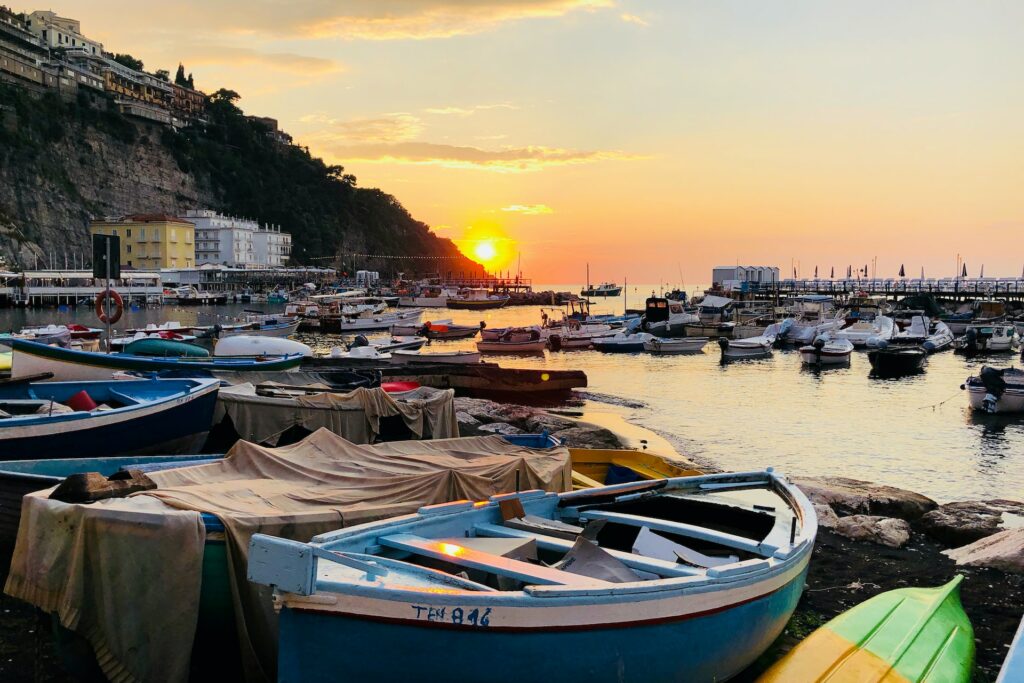
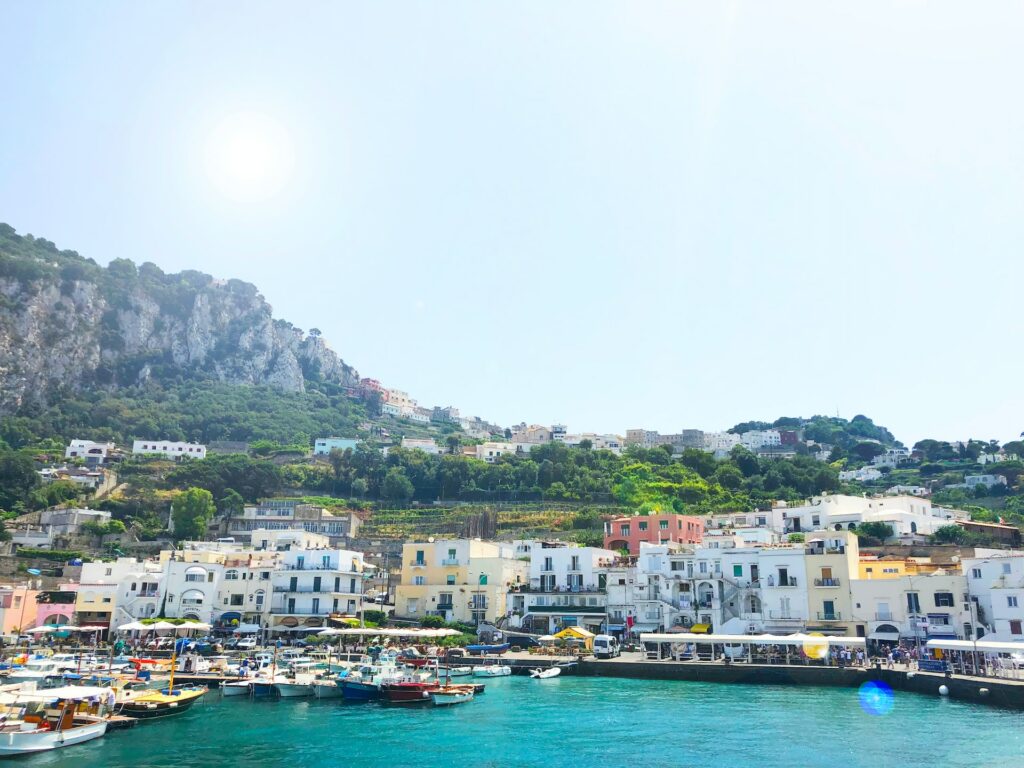
Marina Grande will also offer excellent walks, scenarios for photographing, and perhaps the discovery of a cape on which stood a beautiful villa owned by Augustus’ nephew, Agrippa Postumo. To close the circle, there will also be many restaurants and clubs that will make you taste unique cuisine rich in flavors. These delicious dishes of the Mediterranean tradition can be enjoyed in beautiful corners overlooking the sea: an opportunity not to be missed.
Sorrento Cathedral
Sorrento Cathedral has been rebuilt several times over the years, and it owes its current appearance to the reconstruction of the facade, which dates back to 1924. The cathedral was dedicated to Saints James and Philip. The only original element remains the side marble portal, which depicts three coats of arms: the Archbishop de Angelis, the House of Aragon, and Sixtus IV. The interior, consisting of three naves with a Latin cross, has preserved exquisite works of great value. Surprises begin immediately from the first chapel, where we find the baptistery where Torquato Tasso was baptized. Next to it is a marble relief framed by twelve tiles.
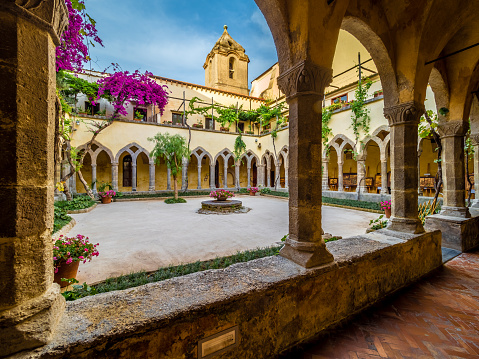
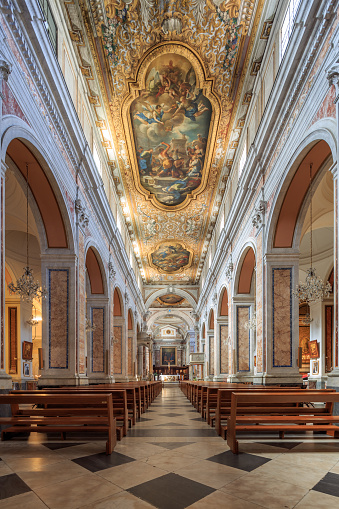
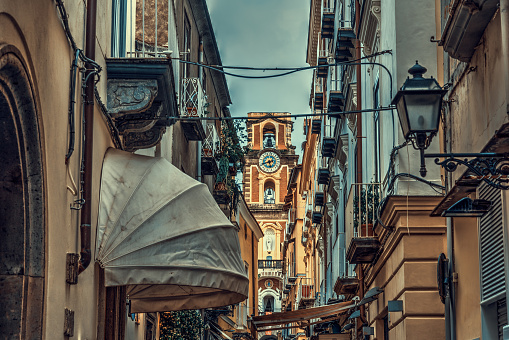
In the central nave, there is a very valuable pulpit, decorated with two works of the sixteenth century, and a bishop’s throne. In another chapel, there is an exquisite wooden crucifix illuminating the altar with several cherubs on the sides. Next to the cathedral, there is a red 5-story bell tower. The base and the first three floors probably date back to 1100, and the upper part, together with the ceramic clock, is attributed by scientists to the eighteenth century.
Sorrento Beaches
Beauty is also evident on the beaches. The small coves will give you unique landscapes with rocks framing them and the blue sea, which invites you to go diving and snorkeling. One of the most charming places is Bagni Della Regina Giovanna. You will find yourself in a pool with a clear sea surrounded by a cliff full of juniper trees that offers a suggestive setting. Then the baths are surrounded by a Roman villa built in the I century BC. Another beach that is especially appreciated and visited by many VIPs is Skrayo Beach: the ridge descending to the sea waters is crystalline because there is a constant change due to thermal water coming from aquifers.
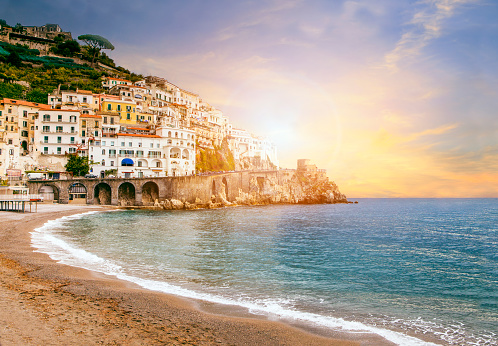
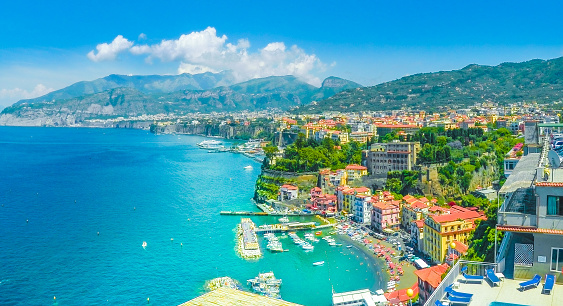
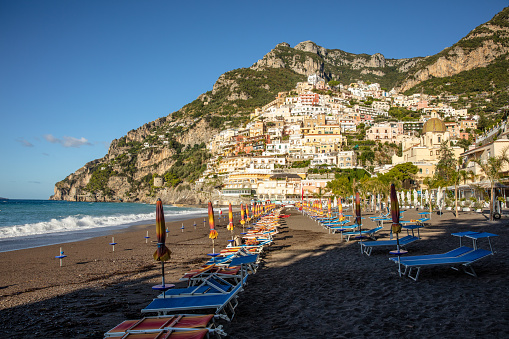
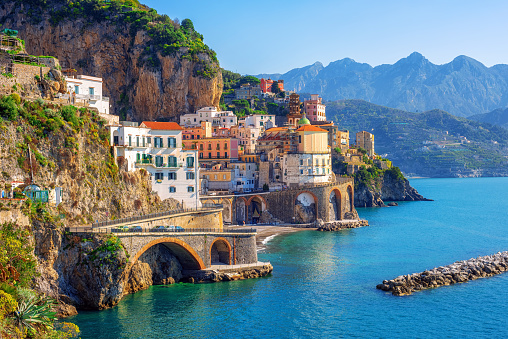
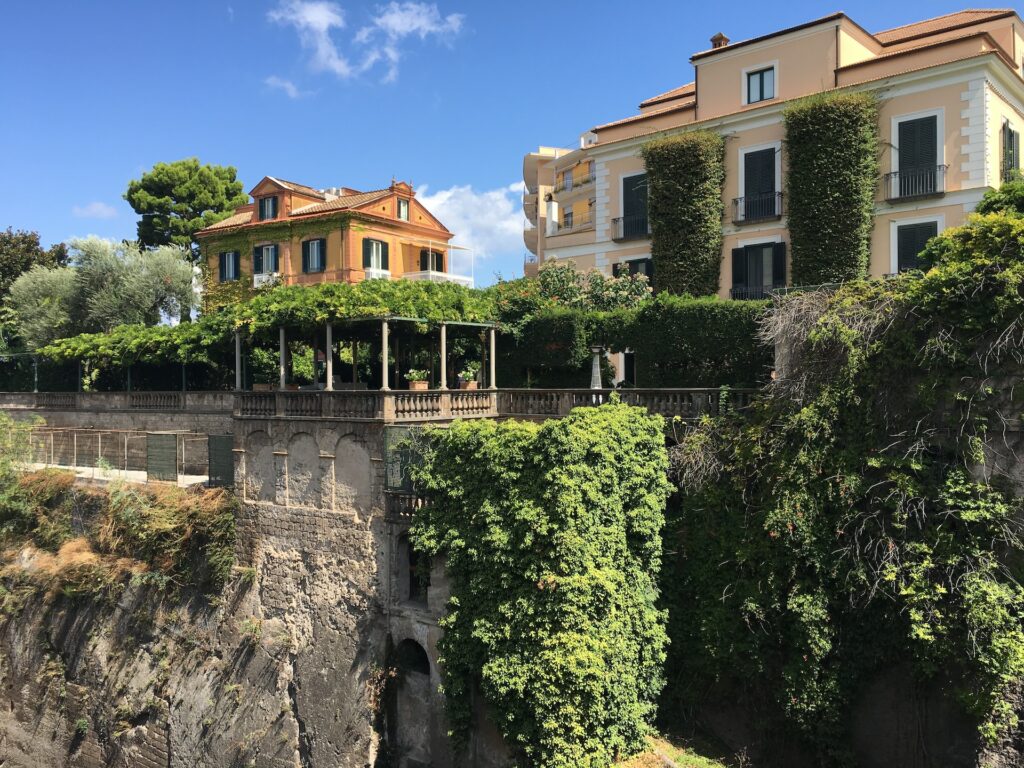
The Gulf of Hieranto is another pearl. You will find yourself in front of a rocky bay, which is part of a protected marine area. A clear sea with beautiful shades will make you want to dive. It can be reached by sea thanks to an excursion or by land, crossing the path that runs through the Mediterranean thickets. For those who want a closer beach, there is an opportunity to choose between Marina Grande and Marina Piccola: these are two not very extensive beaches of volcanic origin.
Gnocchi alla sorrentina
The cuisine is another of the advantages of Sorrento, Italy. His culinary offering knows how to blend Mediterranean flavors with the delicacies of the sea and countryside. Gnocchi Alla Sorrentino is one of the most popular dishes in the area. They were once known as strangulating. Potato dumplings are prepared by hand from water and flour and boiled in boiling water. The next step is to fill them with sauce, which includes several ingredients: mozzarella di fiordilatte, tomato sauce, a little parmesan, and basil.


Only one thing is missing: before serving, gnocchi is put on a Pignatello (clay frying pan) and baked to get gratin. Several delicacies are worth trying during your trip: Sorrento mussels (seasoned with San Marzano tomatoes, datterini tomatoes, and garlic). Among the desserts: lemon delicacies, sfogliatelle Santa Rosa and baba with limoncello.
Limoncello
Limoncello is the symbol of Sorrento. The history of the king of aperitifs and digestives is full of anecdotes and legends. According to the Sorrento tradition, aristocratic families treated their guests to this yellow liqueur back in 1900. According to other versions, the origins are more ancient and go back to some fishermen who drank it so as not to feel the winter cold. Myth or fiction, but the reality is that limoncello is now a custom from north to south.
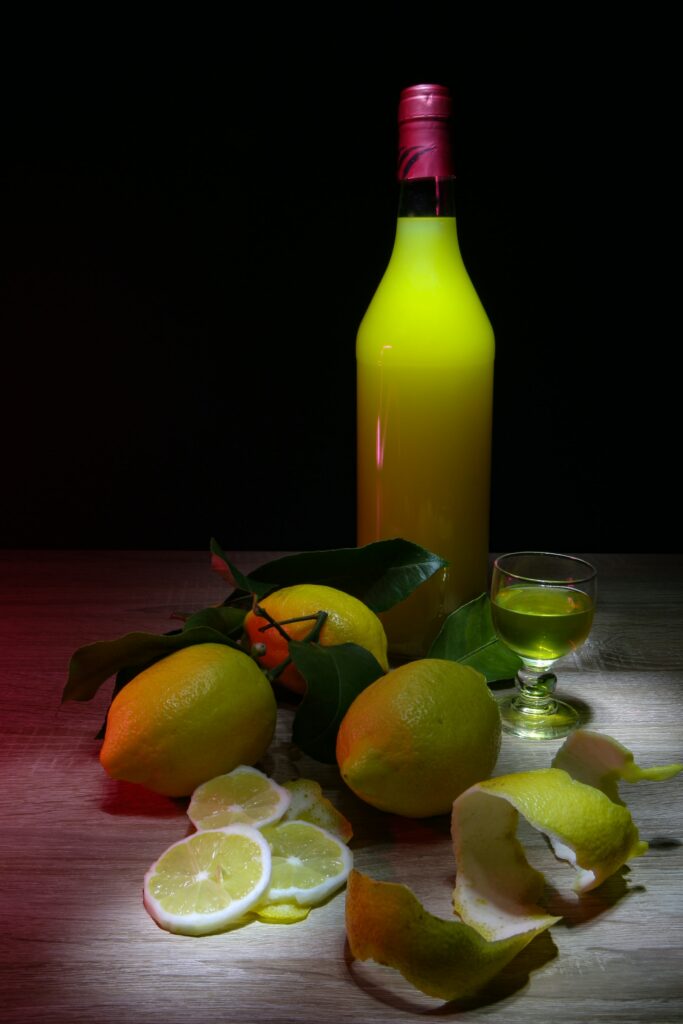
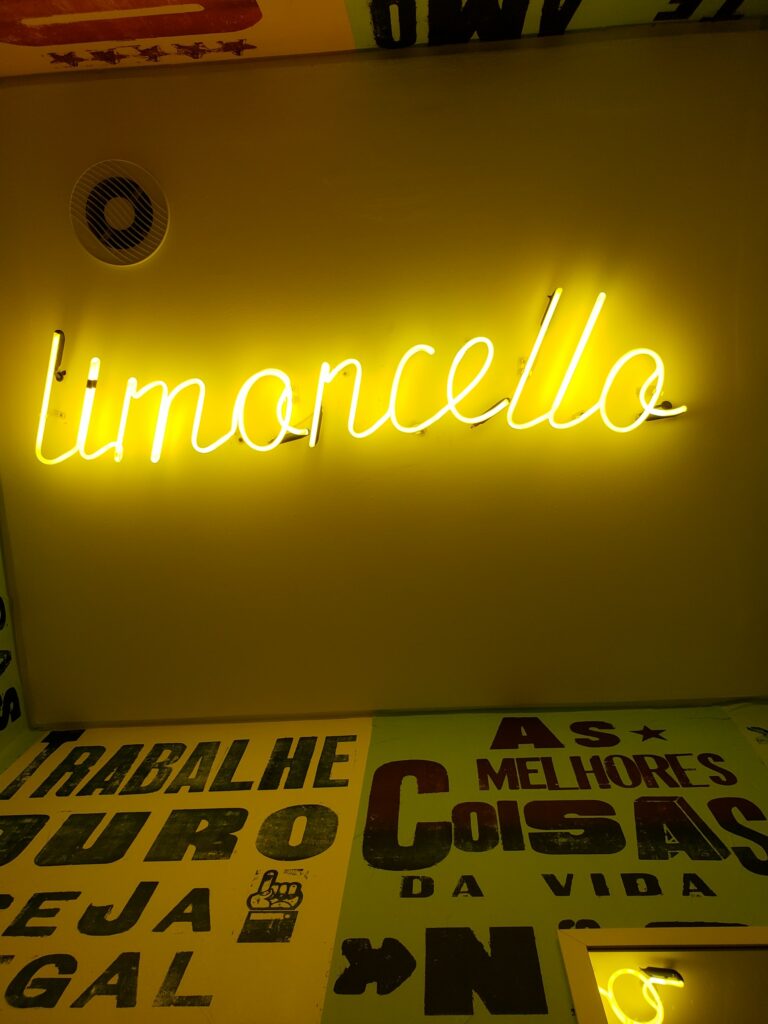
The specificity of Sorrento is due to a special kind of lemons. The uniqueness of these citrus fruits depends on several elements: the sea, the microclimate, and protection from the cold thanks to special coatings that are placed on pergolas of chestnut poles. The secret of cooking is that only the surface zest is removed from the lemon, leaving the white part, which gives the liqueur a more bitter taste. Limoncello is used not only at the end of a meal, but is also often one of the ingredients of cocktails or used in the kitchen to prepare various desserts.











I’m not the comments type, I usually read something and take a million screenshots then go to the next thing on my list. I had to come back and thank you for this article, we had an amazing trip! Went there with another couple, we were on the lookout for a picturesque, small beach so we decided to go with Marina Piccola which proved to be just that. And yes, these guys are very serious about their Limoncello, it’s everywhere!
Sorrento is perfect for a day trip or to stay there while exploring the Amalfi coast. Also, Grand Hotel La Favorita has stunning views of both the marina and Vesuvius.